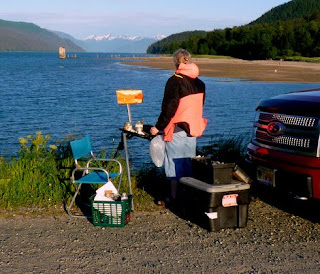Starting a Painting: Oil (or acrylic) Underpainting (grisaille)
For me, defining the composition (underlying design) using a monochrome underpainting is essential in getting started on a new oil painting. I use it for any painting, landscape or not. This approach, used by many painters and on hundreds of my own oil paintings over the last 30 or 40 years is a great way to break the ice and "find" and capture the scene. It goes quickly, usually taking an hour or two at most, and I enjoy it.
Technically, this is called an underpainting or "grisaille". I learned it, I guess, from studying the techniques of other painters and reading about it. One of the good things is that if it doesn't turn out, not a lot of time or material wasted. And it also allows me to return to a scene to pick up where I left off. And once in a while, I use it to finish a painting in the studio.
The grisaille (I pronounce it 'gree zay') has two important functions (1) finding and defining the composition, and (2) providing an accent to the colors and shapes in the final painting (the color of the underpainting matters. The rusty red color works with my color palette).
Step 1 - I use my home made "L" shaped cardboard frame corners, proportioned the same as my support (canvas) to find and frame the scene, looking for a composition that is most effective. Note the big paperclip under my thumb, keeps it in place.
Step 2 - I begin laying in the basic underlying design, light and dark shapes, using a very dilute color using a rag. I will go back to Step 1 a couple of times.
Step 3 - I put the frame corners away, and further define light and dark shapes, using a brush and the rag to lighten blend and erase. I try to be spontaneous and loose, but faithful.
Step 4 - Stand back and squint at the scene and the painting to see how it is working. I do this every now and then, both for the underpainting and, later, while painting the final.
Step 5 - Refining and correcting the underlying design, this is near completion, trying not to overdo or overpower, and keeping it loose and spontaneous. Here I am using a Q-tip to 'erase' and emphasize a light area.







